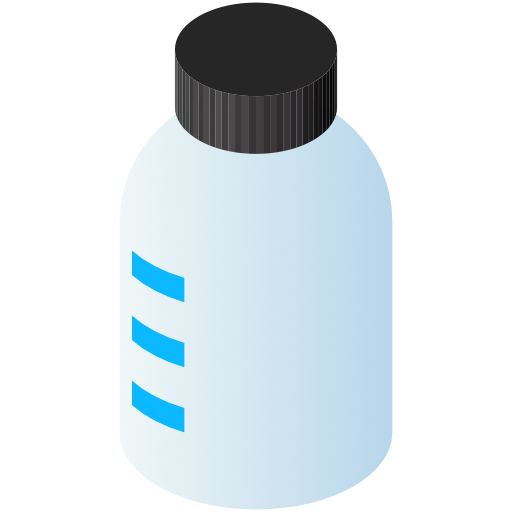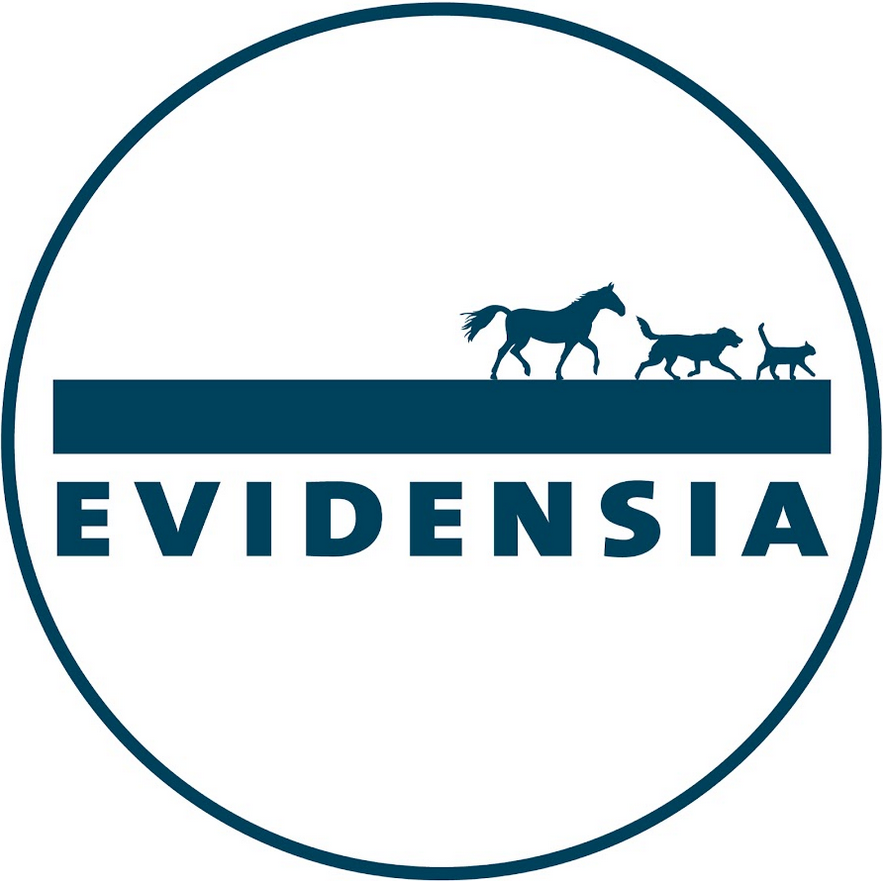Combination therapy
No results were found for your selected species
Aquavac 6 vet.
Active substance
ATC code
Species
Atlantic salmon (Salmo salar L).
Indications
For active immunisation of Atlantic salmon to reduce mortality caused by infections with IPNV (infectious pancreatic necrosis), Aeromonas salmonicida subsp. salmonicida (furunculosis), Vibrio salmonicida (cold-water vibriosis), Listonella (Vibrio) anguillarum serotype O1 and O2a (vibriosis), and Moritella viscosa (winter ulcer disease).
Onset of immunity:
500 degree days after vaccination for the bacterial antigens and 608 degree days after vaccination for IPNV.
Duration of immunity:
A. salmonicida and M. viscosa: 18 months.
L. anguillarum O1, L. anguillarum O2a and V. salmonicida: 16 months.
Infectious pancreatic necrosis virus: 4 months.
Dose to be administered and administration route
Intraperitoneal use.
Shake the bottle well before use.
Dosage: a single dose of 0.1 ml.
Administration: intraperitoneally along the central line, approximately 1 pelvic fin length in front of the pelvic fin base in Atlantic salmon.
Vaccination is recommended for fish above 30 grams.
Food should be withheld at least 2 days prior to vaccination.
The fish should be anaesthetised before vaccination.
The length and the diameter of the applied needle should be adapted to the actual fish size. Ensure that the recommended dose is deposited into the abdominal cavity before the needle is withdrawn.
Adverse reactions
Oil adjuvant increases the risk of side effects after vaccination in the form of adhesions and pigmentation in the abdominal cavity.
Moderate adhesions and pigmentation in the abdominal cavity are very commonly observed.
Vaccine residues occur very commonly.
Adhesions with a Speilberg score of 1 to 3 are commonly seen with most of the scores ≤ 2. More extensive changes (Speilberg score 4) uncommonly occur.
A reduction in appetite after vaccination is very commonly observed. The loss of appetite is most pronounced during the first week after vaccination and feed intake is restored within 10 - 12 days. Appetite loss after vaccination does not affect weight at harvest.
The frequency of adverse reactions is defined using the following convention:
- very common (more than 1 in 10 animals treated displaying adverse reaction(s))
- common (more than 1 but less than 10 animals in 100 animals treated)
- uncommon (more than 1 but less than 10 animals in 1,000 animals treated)
- rare (more than 1 but less than 10 animals in 10,000 animals treated)
- very rare (less than 1 animal in 10,000 animals treated, including isolated reports)
Dispensing
POM-V - Prescription Only Medicine – VeterinarianSUMMARY OF PRODUCT CHARACTERISTICS
1. NAME OF THE VETERINARY MEDICINAL PRODUCT
AquaVac 6 emulsion for injection for Atlantic salmon
2. QUALITATIVE AND QUANTITATIVE COMPOSITION
Each dose of 0.1 ml contains:
Active substances:
Infectious pancreatic necrosis virus (IPNV) serotype Sp, inactivated ≥ 1.5 ELISA units1
Aeromonas salmonicida subsp. salmonicida, inactivated ≥ 10.7 log2 ELISA units2
Vibrio salmonicida, inactivated ≥ 90% RPS3
Listonella (Vibrio) anguillarum serotype O1, inactivated ≥ 75% RPS3
Listonella (Vibrio) anguillarum serotype O2a, inactivated ≥ 75% RPS3
Moritella viscosa, inactivated ≥ 6.5 log2 ELISA units2
1Antigenic mass measured in the final product
2Serological response in Atlantic salmon
3RPS: relative percentage survival in a laboratory test in Atlantic salmon
Adjuvant:
Paraffin, light liquid: 43 mg.
For the full list of excipients, see section 6.1.
3. PHARMACEUTICAL FORM
Emulsion for injection.
White to nearly white emulsion.
4. CLINICAL PARTICULARS
4.1 Target species
Atlantic salmon (Salmo salar L).
4.2 Indications for use, specifying the target species
For active immunisation of Atlantic salmon to reduce mortality caused by infections with IPNV (infectious pancreatic necrosis), Aeromonas salmonicida subsp. salmonicida (furunculosis), Vibrio salmonicida (cold-water vibriosis), Listonella (Vibrio) anguillarum serotype O1 and O2a (vibriosis), and Moritella viscosa (winter ulcer disease).
Onset of immunity:
500 degree days after vaccination for the bacterial antigens and 608 degree days after vaccination for IPNV.
Duration of immunity:
A. salmonicida and M. viscosa: 18 months.
L. anguillarum O1, L. anguillarum O2a and V. salmonicida: 16 months. Infectious pancreatic necrosis virus: 4 months.
4.3 Contraindications
None.
4.4 Special warnings for each target species
Vaccinate healthy fish only.
4.5 Special precautions for use
Special precautions for use in animals
The vaccine should not be used in diseased or unhealthy fish, fish receiving medical treatment, or fish during smoltification.
Do not vaccinate below 2.5 °C or above 17 °C.
Vaccination at high water temperatures (≥ 17 °C) may increase local reactions.
Incorrect vaccination, stress and poor hygiene may lead to increased side effects.
Special precautions to be taken by the person administering the veterinary medicinal product to animals
Personal protective equipment consisting of guarded needles or needle protectors should be used when administering the product.
In case of accidental self-injection, seek medical advice immediately and show the package leaflet or label to the physician.
To the user:
This veterinary medicinal product contains mineral oil. Accidental injection/self-injection may result in severe pain and swelling, particularly if injected into a joint or finger, and in rare cases could result in the loss of the affected finger if prompt medical attention is not given.
If you are accidentally injected with this product, seek prompt medical advice even if only a very small amount is injected and take the package leaflet with you.
If pain persists for more than 12 hours after medical examination, seek medical advice again.
To the physician:
This veterinary medicinal product contains mineral oil. Even if small amounts have been injected, accidental injection with this product can cause intense swelling, which may, for example, result in ischaemic necrosis and even the loss of a digit. Expert, PROMPT, surgical attention is required and may necessitate early incision and irrigation of the injected area, especially where there is involvement of finger pulp or tendon.
4.6 Adverse reactions (frequency and seriousness)
Oil adjuvant increases the risk of side effects after vaccination in the form of adhesions and pigmentation in the abdominal cavity.
Moderate adhesions and pigmentation in the abdominal cavity are very commonly observed.
Vaccine residues occur very commonly.
Adhesions with a Speilberg score of 1 to 3 are commonly seen with most of the scores ≤ 2. More extensive changes (Speilberg score 4) uncommonly occur.
A reduction in appetite after vaccination is very commonly observed. The loss of appetite is most pronounced during the first week after vaccination and feed intake is restored within 10 - 12 days. Appetite loss after vaccination does not affect weight at harvest.
The frequency of adverse reactions is defined using the following convention:
- very common (more than 1 in 10 animals treated displaying adverse reaction(s))
- common (more than 1 but less than 10 animals in 100 animals treated)
- uncommon (more than 1 but less than 10 animals in 1,000 animals treated)
- rare (more than 1 but less than 10 animals in 10,000 animals treated)
- very rare (less than 1 animal in 10,000 animals treated, including isolated reports)
4.7 Use during pregnancy, lactation or lay
Do not use in broodstock. The possible effects of vaccination on spawning have not been investigated.
4.8 Interaction with other medicinal products and other forms of interaction
No information is available on the safety and efficacy of this vaccine when used with any other veterinary medicinal product. A decision to use this vaccine before or after any other veterinary medicinal product therefore needs to be made on a case-by-case basis.
4.9 Amounts to be administered and administration route
Intraperitoneal use.
Shake the bottle well before use.
Dosage: a single dose of 0.1 ml.
Administration: intraperitoneally along the central line, approximately 1 pelvic fin length in front of the pelvic fin base in Atlantic salmon.
Vaccination is recommended for fish above 30 grams.
Food should be withheld at least 2 days prior to vaccination.
The fish should be anaesthetised before vaccination.
The length and the diameter of the applied needle should be adapted to the actual fish size. Ensure that the recommended dose is deposited into the abdominal cavity before the needle is withdrawn.
4.10 Overdose (symptoms, emergency procedures, antidotes), if necessary
Following the administration of a 2X overdose, no reactions other than those described in section 4.6 were observed.
4.11 Withdrawal period(s) Zero degree days.
5. IMMUNOLOGICAL PROPERTIES
Pharmacotherapeutic group: Immunologicals for Pisces, inactivated bacterial and viral vaccines for Atlantic salmon. ATCvet code: QI10AL02
Stimulates active immunity against infectious pancreatic necrosis, furunculosis, coldwater vibriosis, vibriosis and winter ulcer disease in Atlantic salmon.
6. PHARMACEUTICAL PARTICULARS
6.1 List of excipients
Paraffin, light liquid
Polysorbate 80
Sorbitan monooleate
Sodium chloride
Potassium chloride
Disodium phosphate dihydrate
Potassium dihydrogen phosphate Water for injections
6.2 Major incompatibilities
Do not mix with any other veterinary medicinal product.
6.3 Shelf life
Shelf life of the veterinary medicinal product as packaged for sale: 9 months. Shelf life after first opening the container: use within the same day.
6.4 Special precautions for storage
Store and transport refrigerated (2 °C – 8 °C). Do not freeze.
6.5 Nature and composition of immediate packaging
Polyethylene terephthalate (PET) bottle closed with a rubber stopper and aluminium cap.
Package size: 500 ml (5 000 doses).
6.6 Special precautions for the disposal of unused veterinary medicinal products or waste materials derived from use of such products
Any unused veterinary medicinal product or waste materials derived from such veterinary medicinal product should be disposed of in accordance with local requirements.
7. MARKETING AUTHORISATION HOLDER
MSD Animal Health UK Limited
Walton Manor
Walton
Milton Keynes
Buckinghamshire
MK7 7AJ
8. MARKETING AUTHORISATION NUMBER
Vm 01708/5065
9. DATE OF FIRST AUTHORISATION
08 August 2022
10. DATE OF REVISION OF TEXT
August 2022

Approved: 08 August 2022
 TRUSTED SOURCE
TRUSTED SOURCE









